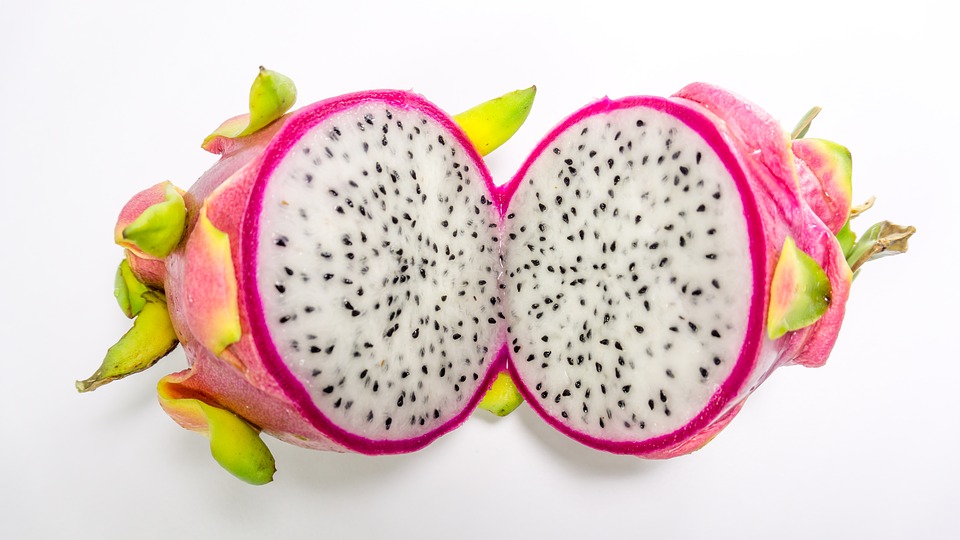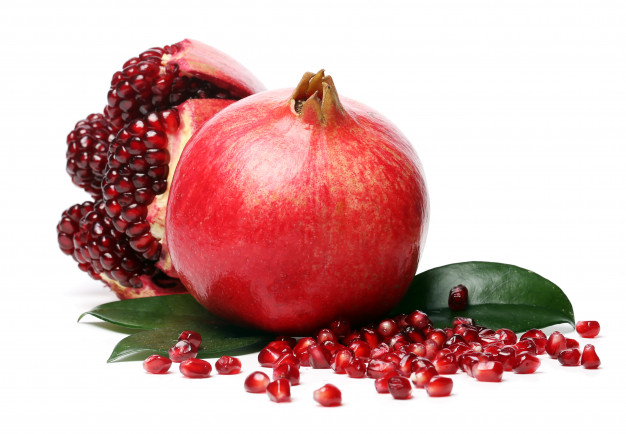Table of Contents
Purchase, use, and recipes
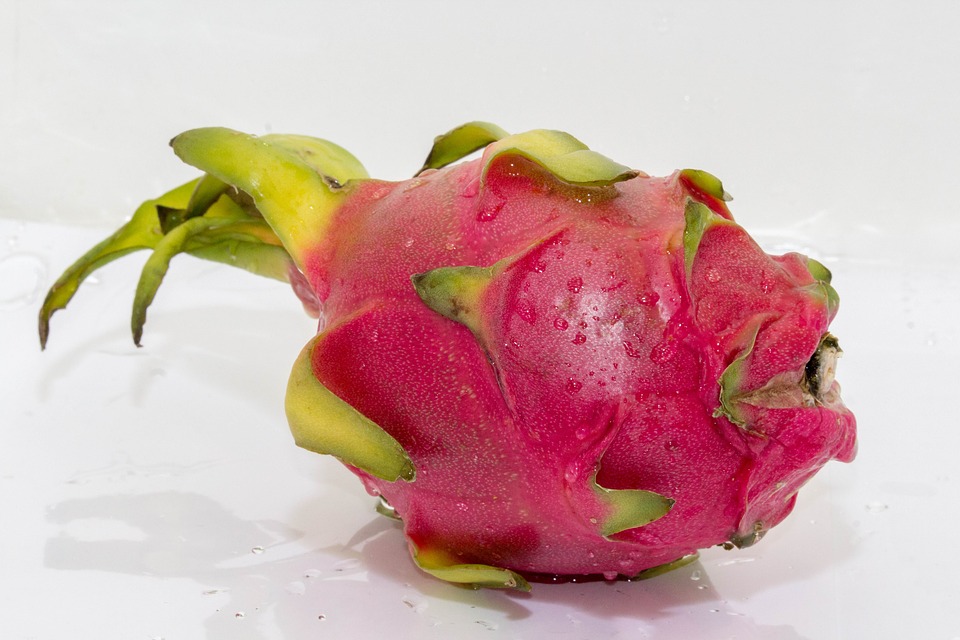
Dragon fruit, also named pitaya or strawberry pear, is a beautiful tropical fruit that is sweet and crispy. The plant the fruit comes from is a type of cactus in the genus Hylocereus, which includes around 20 diverse species. Initially expected in Southeast Asia and Latin America, dragon fruit now grown and enjoyed worldwide. Although it can look intimidating with its pink skin and light green scales, this unusual fruit is easy to make. You can enjoy it in fruit salads, it can used to make delicious drinks and desserts, and it makes a wonderful, healthy snack itself.
What is dragon fruit?
The dragon fruit got its name from its appearance, which resembles an artichoke. The pointed “scales” around the oval fruit are evocative of a dragon.
The fruit comes in four varieties
here pink-skinned, one with white skin, one with red flesh, and the third with elaborate meat. The fourth change has yellow skin with white pulp. They all have small black seeds that are edible, like kiwi fruit. Its unique appearance is excellent for serving, but this tropical fruit also goes wonderfully with cocktails. The fruits are straightforward to prepare. Just cut them in half and story out the pulp with a spoon. Dragon fruits can a bit expensive depending on the variety and where it grown.
How to use dragon fruit
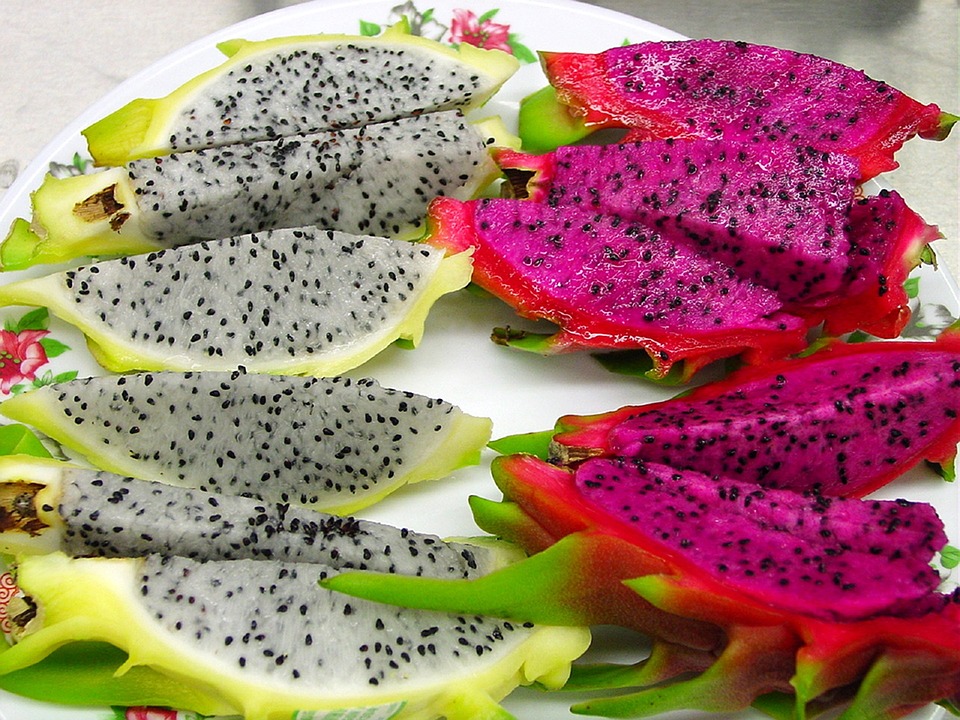
Dragon fruits mostly eaten in their raw form, regardless of whether they cut, mixed or served frozen. But it can also grilled, which can done on a skewer together with other fruits such as pineapple.
As tough as the outer shell may be, it is calm to cut. Place the dragon fruit on an acerbic board or other clean surfaces. Sharp blade, cut the fruit in half and separate it in two.
Removing the pulp from the fruit is very easy and is similar to serving an avocado. Spoon around the perimeter of each section to separate the meat from the skin (which is inedible). Use the spoon to remove the meat from the skin and place it on the cutting board. Turn the pile of meat over, look for pink skin and cut it into cubes or slices.
How does it taste?
Dragon fruit has a sweet and delicate taste that could describe as “stifling”. It has described cross among kiwi and pear or kiwi and watermelon. The texture is a bit creamy with small seeds, similar to that of kiwi fruit.
Officially, the types of It can divided into genus/species/hybrids. The genus Hylocereus has three different types of dragon fruit while Selenicereus has one, with each type having multiple hybrids. However, it is much easier to classify dragon fruits based on their skin and flesh color.
The pink, white-fleshed dragon fruit (Hylocereus undatus) is the most common. This is the least sweet variety and can sold under names like Alice, Cosmic Charlie, David Bowie, Guyute, Harpua, LA Woman, Neitzel, Seoul Kitchen, and Vietnamese
Hylocereus polyrhizus has pink peel with red or pink flesh and is often larger and sweeter than the more common variety. Look for Bloody
Hylocereus guatemalensis is the third type of fruit in this genus. It has light pink skin and purple flesh. Built-in to Central and South America, it also grown in Florida and marketed American Beauty.
The smallest and cutest variety has yellow skin and white flesh. Selenicereus megalanthus mainly grown in South America the most difficult to find it is not mass-produced.
Dragon fruit recipes
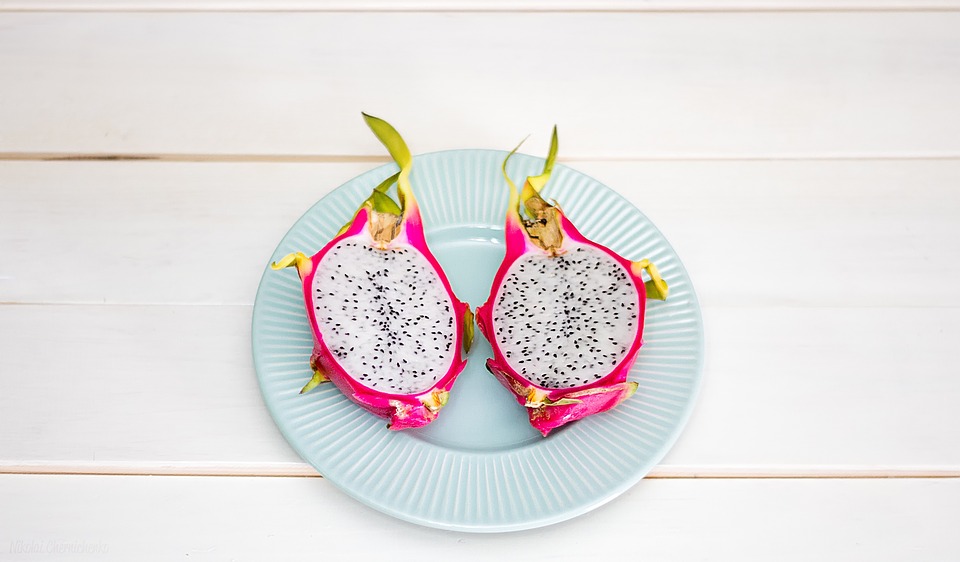
Dragon fruit often liked on its own, either cut or eaten skinless. (It’s the perfect container for a quick snack. Just grab a spoon and dig.) You can put the cubes back on the bowl for serving, or just put them on a plate for serving and enjoying. Or scoop out the dragon meat with a melon for a pretty presentation.
Dragon fruit goes perfectly with fish dishes, especially cod, tuna, and mahi-mahi. Serve the fruit on the side or finely chop and top the fish with a sauce. It goes well with almost all tropical fruits. So mix them with mango, papaya or pineapple.
The sweet taste of dragon fruit also makes for delicious frozen desserts and drinks.
Frozen Dragon Fruit Sorbet
It smoothie (Replace longan fruit with dragon fruit).
Where can you buy dragon fruit?
Dragon fruit can found throughout the year, although the season peaks in summer and lasts until early fall. Its twisted-looking skin makes it easy to spot at any produce market, but not all grocery stores sell dragon fruit. If your local supermarket doesn’t have it available, visit a specialty store or Asian market.
To choose a ripe dragon fruit, make sure your skin is light and uniform in colour. Some blemishes are normal, but if the fruit has many flaws, it may be overripe. Grip the dragon fruit in the palm of your hand and try to squeeze the skin with your thumb or fingers. It should be a little bit, but not too soft or mushy. If it is very firm, it has to mature for a few days.
Ripe dragon fruits can sit on the counter for a few days. For longer storage, place the fruit in a sealed plastic bag and store in the refrigerator. This fruit can absorb the flavors and smells of other foods, so it is necessary to wrap it well.
Do not cut the dragon fruit until you are ready to eat it. Once cut, like most cut fruits, it should be refrigerated in a tightly closed ampule. It can stay new for a day, possibly a little longer, depending on how ripe it is. Once the meat turns brown and mushy, it’s time to throw it away
Diet and Benefits
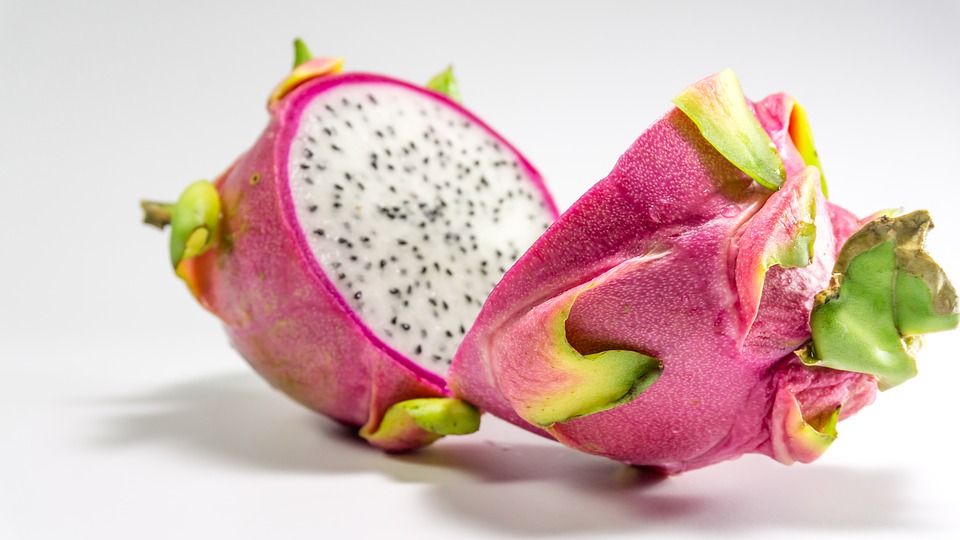
Dragon fruit rich in nutrients, high in antioxidants and low in calories.1 It contains many vitamins, minerals and phytochemicals that have linked to reducing the risk of cancer.2 A significant content of vitamin C can help fight chronic diseases and improve your immune system .3
This fruit loaded with fiber and contains 7 grams per 1-cup serving. This makes them a great option if you are managing your weight (the fiber will replenish it) and aiding digestion, as it promotes a healthy gut.4 One of the few fruits, dragon fruits that contain iron, can help increase iron levels. When combined with vitamin C, it increases the rate of iron absorption.
